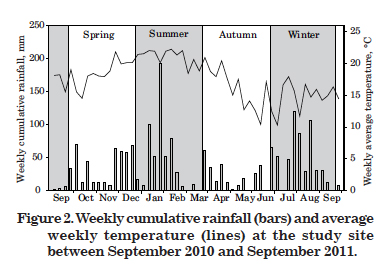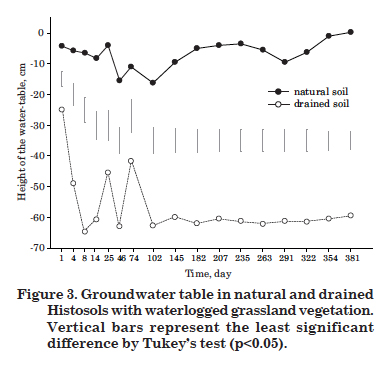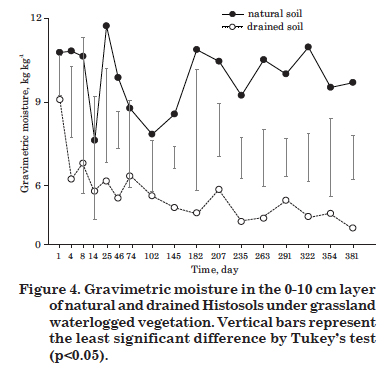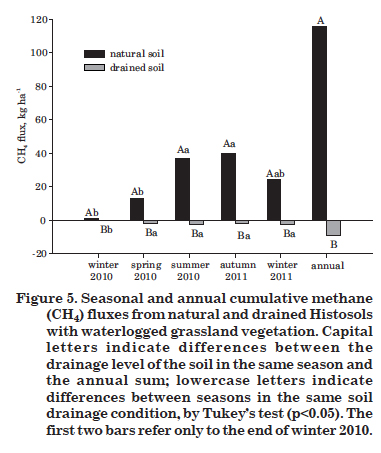Soil can be either source or sink of methane (CH4), depending on the balance between methanogenesis and methanotrophy, which are determined by pedological, climatic and management factors. The objective of this study was to assess the impact of drainage of a highland Haplic Histosol on CH4 fluxes. Field research was carried out in Ponta Grossa (Paraná, Brazil) based on the measurement of CH4 fluxes by the static chamber method in natural and drained Histosol, over one year (17 sampling events). The natural Histosol showed net CH4 eflux, with rates varying from 238 µg m-2 h-1 CH4, in cool/cold periods, to 2,850 µg m-2 h-1 CH4, in warm/hot periods, resulting a cumulative emission of 116 kg ha-1 yr-1 CH4. In the opposite, the drained Histosol showed net influx of CH4 (-39 to -146 µg m-2 h-1), which resulted in a net consumption of 9 kg ha-1 yr-1 CH4. The main driving factors of CH4 consumption in the drained soil were the lowering of the water-table (on average -57 cm, vs -7 cm in natural soil) and the lower water content in the 0-10 cm layer (average of 5.5 kg kg-1, vs 9.9 kg kg-1 in natural soil). Although waterlogged Histosols of highland areas are regarded as CH4 sources, they fulfill fundamental functions in the ecosystem, such as the accumulation of organic carbon (581 Mg ha-1 C to a depth of 1 m) and water (8.6 million L ha-1 = 860 mm to a depth of 1 m). For this reason, these soils must not be drained as an alternative to mitigate CH4 emission, but effectively preserved.
greenhouse gas; water sources; water-table; gravimetric moisture; air temperature; rainfall







